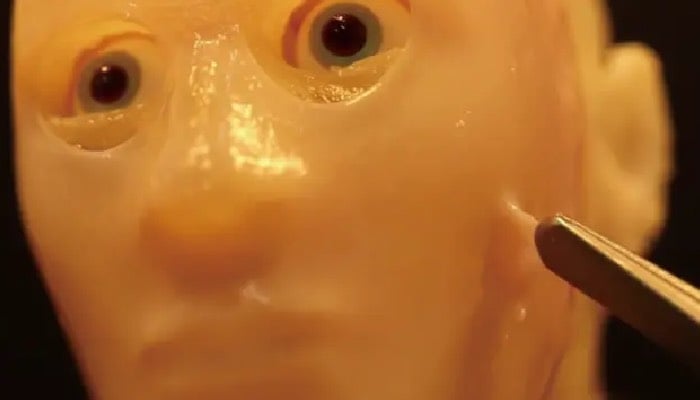
Japanese scientists at Tokyo University have successfully attached living skin to robot faces, allowing for more realistic smiles and facial expressions.
The breakthrough came from replicating human tissue structures.
The findings published in the journal Cell Reports Physical Science showcase a significant step towards creating realistic, moving humanoids with self-healing skin through the prototype, though not yet human-like.
This artificial skin is made in the lab using living cells, making it soft and capable of repairing itself if cut.
While, pevious attempts to attach artificial skin faced challenges, as mini hooks used as anchors damaged the skin during movement.
To overcome this, the researchers drilled small holes into the robot and applied a gel containing collagen.
The gel plugged the holes and tethered the skin to the robot, mimicking the way ligaments attach skin to underlying structures in humans.
Meanwhile, lead researcher Prof. Shoji Takeuchi said, "By mimicking human skin-ligament structures and using specially made V-shaped perforations, we found a way to bind skin to complex structures," as per BBC.
This method allows the skin to move with the robot's mechanical components without tearing or peeling away.
The researchers note that it will take years of testing before this technology becomes an everyday reality.
Moreover, Prof. Takeuchi highlighted the next challenge as integrating sophisticated actuators, or muscles, to create human-like expressions.















